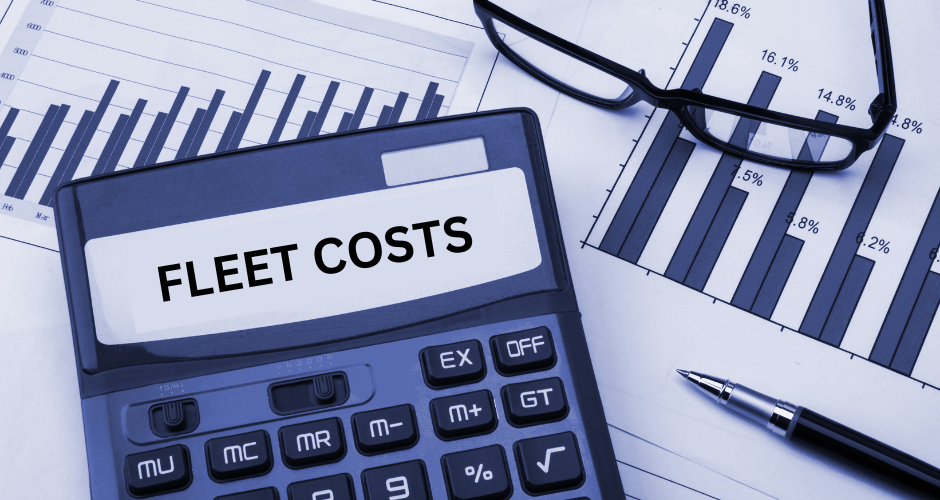 Miya Bholat
Miya Bholat
March 20, 2023
Fleet Management Cost and Expense Analysis

Fleet management is a complex yet crucial aspect of running a successful business. Driving efficiency and reducing costs are always at the forefront of any fleet manager's mind - as they rightfully should be.
Thus, understanding and controlling fleet management costs and fleet expenses plays a vital role in running an efficient and profitable fleet.
As a fleet manager, you need to know how to perform an effective fleet management cost analysis to make data-driven decisions for your organization.
In this post, we'll discuss a few ways you can monitor and analyze your expenses - and we'll explore a few ways you can reduce costs. We'll also introduce you to AUTOsist's custom fleet reporting capabilities, so you can have smooth expense management each and every year.
Determine Which Fleet Maintenance Expenses To Track
Managing a fleet is no easy task, and ensuring each vehicle’s proper maintenance is imperative for productive fleet operations and optimal bottom-line results.
However, fleet maintenance doesn't come without a cost. As a fleet manager, you need to understand and track various expenses associated with keeping your vehicles in top shape to effectively manage your budget and make data-driven decisions.
One of the most significant fleet maintenance expenses is labor. This includes the wages of maintenance technicians who work on your vehicles, along with any benefits and overtime pay.
Tracking these costs is essential to understanding the total maintenance expense and ensuring you have enough skilled workforce to keep your fleet in excellent condition.
Equipping your maintenance shop with the necessary tools and equipment is another essential aspect of fleet maintenance. This category includes expenses such as diagnostic devices, car jacks, and air compressors, as well as smaller hand tools like wrenches and ratchets.
Depending on the size and capabilities of your maintenance shop, you may find yourself outsourcing some tasks to specialty shops. These could include tasks such as bodywork, wheel alignment, or advanced diagnostics that your team may not have the tools or expertise to handle.
Managing your parts inventory is a critical aspect of controlling fleet maintenance expenses. This includes the costs of purchasing, storing, and managing all parts necessary for regular maintenance as well as unexpected repairs.
Finally, fleet vehicles require a variety of fluids to operate efficiently, including oil, coolant, transmission fluid, and more. Tracking fluid expenses is important for understanding overall maintenance costs and identifying potential inefficiencies in fluid consumption.
Invest in Good Parts Inventory Management
In today's fast-paced world, you simply can't afford to rely on just-in-time inventory levels for essential maintenance parts, such as brake pads and rotors. Although our supply chains aren't nearly as backed up now as they have been over the last two years, you simply can't risk maintaining "just-in-time" inventory levels for maintenance parts.
Instead, you need to be proactive and keep an eye on your inventory on a daily or weekly basis, ensuring you have enough spare parts on hand to meet upcoming needs.
This approach not only helps you avoid unexpected downtime due to insufficient supplies but also ensures your budget stays in check by not overspending on parts.
Take, for example, rotors that typically need replacing every 60,000-70,000 miles.
If you have 20 vehicles in a fleet (all of which were purchased new within the last three years) and you get an average annual trip mileage of 20,000 per vehicle, you'll want to keep at least 80 rotors on hand, four for each vehicle, along with a few more "buffer" sets in case there are defective parts or additional vehicles that need rotors.
When you write out work orders, make sure they include line item details of which parts were used, what quantity, and how long the repair took.
By effectively maintaining parts inventory, you'll be prepared to handle this type of routine maintenance without missing a beat or hurting your bottom line. You can manage your inventory levels automatically by using fleet maintenance software with digital work orders. These automatically subtract the total inventory from the amount used for service, so the quantities are always up to date.
Monitor Fuel Purchases
Another one of the key factors to monitor is fuel usage. By integrating fuel cards or requiring drivers to input fuel transactions into mobile fleet management apps, you can keep a close eye on fuel expenses.
It's also a good idea to have drivers snap a photo of their receipts for easy tracking.
Fuel efficiency is another crucial aspect to examine – understanding the miles per gallon (MPG) of each vehicle in your fleet can point to possible areas of improvement.
Ensuring that vehicles are properly maintained, such as checking for old, worn tires or low tire pressure, can significantly boost MPG and reduce costs.
Moreover, it's worth considering upgrading to newer fleet vehicle models with better fuel efficiency as technology advances. When the time comes to replace fleet vehicles, take into account factors such as the type of vehicles in your fleet and whether you purchase or lease them.
By doing so, you may find potential fuel-saving options such as hybrid or electric vehicles, further reducing expenses and helping your business thrive.
Analyze Trip Logs and GPS Tracking
Have you ever considered the impact of analyzing trip logs and GPS tracking data on your fleet management costs and expenses? By investing in GPS tracking devices, you not only keep track of your fleet vehicles in real time but also set geofencing parameters.
This ensures that your drivers are only commuting within the designated area, avoiding unnecessary mileage and reducing overall wear and tear.
But don't stop there!
Take the time to scrutinize each driver's trip logs, comparing them to previous records to identify any anomalies or outliers in trip mileage.
By making necessary route adjustments, you can boost productivity while simultaneously keeping mileage in check. Ultimately, these insightful measures lead to significant savings on fuel and maintenance costs, making a notable difference in your fleet management budget.
Create Custom Fleet Management Reports
Without a doubt, fleet management costs and expenses analysis plays a crucial role in staying on top of your organization's finances and ensuring smooth operations.
By regularly creating solid and accurate fleet management reports, you'll be able to effectively assess various aspects of your fleet, such as utilization and expenses.
Instead of wrestling with complicated spreadsheets, why not explore fleet management software that can automate and tailor-make your reports?
This way, you'll get comprehensive insights without the added hassle.
It's important to remember that while maintenance and fuel costs often comprise the bulk of expenses, there are other aspects like registrations, insurance, tolls, and car wash services that should also be considered as part of your budget
With a measured and strategic approach, you can create powerful reports that help you maintain your vehicles, while maximizing fleet profitability.